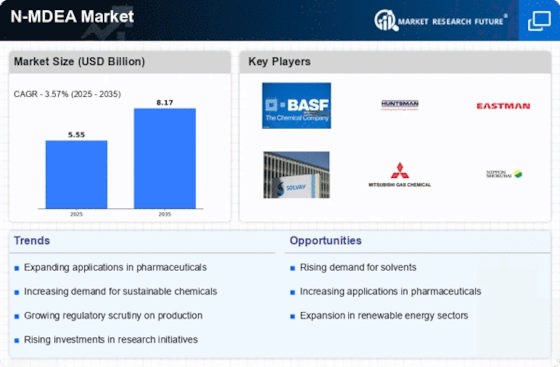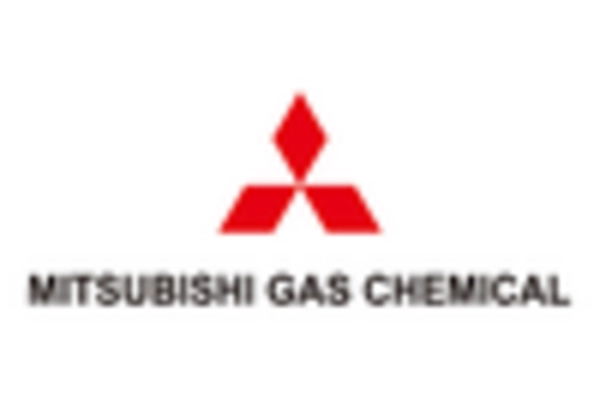Expansion of End-User Industries
The N-MDEA Market is benefiting from the expansion of various end-user industries, including personal care, coatings, and textiles. These sectors utilize N-MDEA for its properties as a surfactant and emulsifier. The personal care industry, in particular, is projected to grow at a compound annual growth rate of 5% through 2025, leading to increased consumption of N-MDEA. This trend suggests that as these industries continue to evolve and innovate, the N-MDEA Market will likely see sustained demand, further solidifying its position in the chemical market.
Growth in Agrochemical Applications
The N-MDEA Market is witnessing significant growth due to its applications in agrochemicals. N-MDEA serves as a vital ingredient in the formulation of herbicides and pesticides, which are essential for modern agriculture. As the global agricultural sector strives to enhance crop yields and ensure food security, the demand for effective agrochemical solutions is likely to rise. In 2025, agrochemical applications are expected to represent around 25% of the N-MDEA market share. This growth indicates a robust future for the N-MDEA Market, driven by the increasing need for sustainable agricultural practices.
Regulatory Support for Chemical Innovations
The N-MDEA Market is positively influenced by regulatory frameworks that support chemical innovations. Governments are increasingly promoting the development of safer and more efficient chemical processes. This regulatory environment encourages manufacturers to invest in N-MDEA production, as it is considered a safer alternative to other amines. In 2025, it is anticipated that regulatory incentives will lead to a 15% increase in N-MDEA production capacity. This support indicates a favorable outlook for the N-MDEA Market, as it aligns with global sustainability goals.
Rising Demand for N-MDEA in Pharmaceuticals
The N-MDEA Market is experiencing a notable increase in demand from the pharmaceutical sector. N-MDEA, or N,N-Dimethylethanolamine, is utilized as a key intermediate in the synthesis of various pharmaceutical compounds. As the global population ages and the prevalence of chronic diseases rises, the need for effective medications escalates. In 2025, the pharmaceutical industry is projected to account for approximately 30% of the total N-MDEA consumption. This trend suggests that the N-MDEA Market will continue to thrive as pharmaceutical companies seek to innovate and expand their product lines.
Technological Advancements in Production Processes
The N-MDEA Market is poised for growth due to technological advancements in production processes. Innovations in chemical manufacturing, such as green chemistry and process optimization, are enhancing the efficiency and sustainability of N-MDEA production. These advancements not only reduce production costs but also minimize environmental impact. In 2025, it is estimated that improved production technologies could lead to a 20% increase in N-MDEA output. This trend suggests that the N-MDEA Market will benefit from enhanced competitiveness and sustainability, attracting further investment.


















Leave a Comment